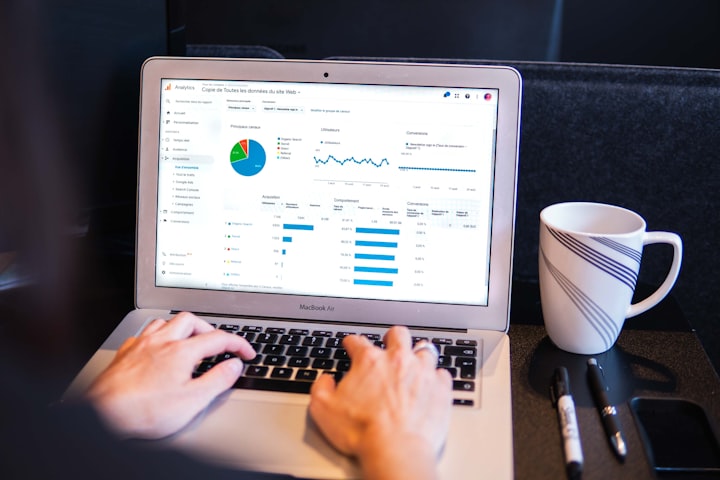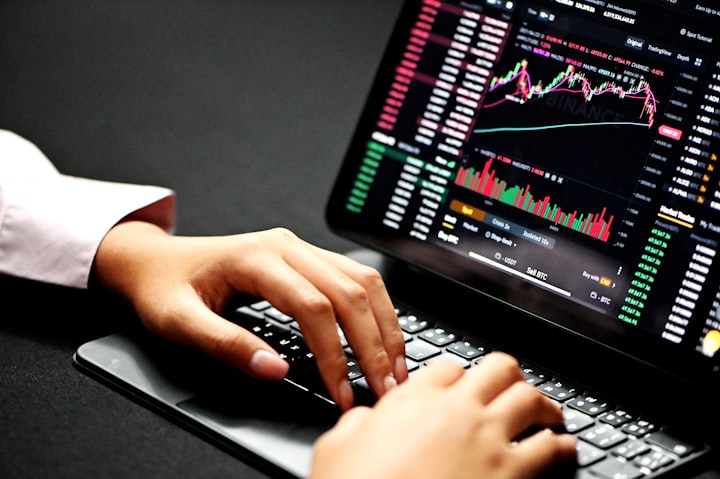Mastering Forex Trading A Beginner's Guide to Becoming a Pro new
chapter 2

Chapter 2: Fundamental and Technical Analysis
Understanding fundamental analysis
Fundamental analysis is a method of evaluating financial assets, such as stocks, bonds, and currencies, by analyzing the underlying economic, financial, and qualitative factors that affect their value. In forex trading, fundamental analysis is used to analyze the economic and political factors that affect the value of currencies.
Here are some of the key elements of fundamental analysis:
1. Economic indicators: Fundamental analysts use economic indicators, such as Gross Domestic Product (GDP), inflation rates, interest rates, and employment figures, to evaluate the overall health of an economy. These indicators provide insight into the strength of the economy and the likely direction of monetary policy.
2. Central bank policy: Central bank policies, such as interest rate decisions and quantitative easing programs, can have a significant impact on currency values. Fundamental analysts track the decisions and statements of central banks, such as the Federal Reserve in the United States, to understand their outlook on the economy and the direction of interest rates.
3. Geopolitical events: Geopolitical events, such as elections, wars, and natural disasters, can also affect currency values. Fundamental analysts monitor these events and assess their potential impact on the economy and the financial markets.
4. Market sentiment: Fundamental analysis also involves assessing market sentiment, which refers to the overall mood and attitude of market participants. Market sentiment can influence the supply and demand for currencies and affect their value.
5. Qualitative factors: Finally, fundamental analysis considers qualitative factors, such as company or country-specific factors, that may affect the value of a currency. These factors may include political stability, trade agreements, and the overall strength of the financial sector.
Overall, fundamental analysis provides a comprehensive approach to understanding the factors that drive currency values. By analyzing economic indicators, central bank policy, geopolitical events, market sentiment, and qualitative factors, fundamental analysts can develop a well-rounded view of the currency markets and make informed trading decisions.
Understanding technical analysis
Technical analysis is a method of evaluating financial assets, such as stocks, bonds, and currencies, by analyzing the historical price and volume data to identify patterns and trends. In forex trading, technical analysis is used to identify potential trading opportunities by analyzing price charts and other technical indicators.
Here are some of the key elements of technical analysis:
1. Price charts: Technical analysts use price charts to visualize the historical price data of a currency pair. The most commonly used types of price charts are line charts, bar charts, and candlestick charts. These charts help traders to identify trends, support and resistance levels, and other patterns in the price data.
2. Technical indicators: Technical analysts also use a range of technical indicators to identify potential trading opportunities. These indicators are mathematical calculations based on price and volume data and are used to identify trend direction, momentum, volatility, and other key market characteristics. Some popular technical indicators used in forex trading include moving averages, Relative Strength Index (RSI), and MACD.
3. Support and resistance levels: Support and resistance levels are key levels on a price chart where the price has previously reversed direction. These levels are used by traders to identify potential entry and exit points for trades. Support levels are where the price is expected to bounce back up, while resistance levels are where the price is expected to reverse and move down.
4. Candlestick patterns: Candlestick patterns are a type of chart pattern that technical analysts use to identify potential trading opportunities. These patterns are formed by the price movements of a currency pair over a specific period of time and can provide insight into market sentiment and trend direction.
5. Trend lines: Trend lines are lines drawn on a price chart to identify the direction of the trend. Technical analysts use trend lines to identify potential support and resistance levels and to help them make trading decisions.
Overall, technical analysis provides a systematic approach to analyzing price charts and identifying potential trading opportunities. By using price charts, technical indicators, support and resistance levels, candlestick patterns, and trend lines, technical analysts can develop a well-rounded view of the currency markets and make informed trading decisions.
Using charts and indicators for analysis
Charts and indicators are important tools for technical analysis, which is a method of evaluating financial assets by analyzing historical price and volume data. In forex trading, charts and indicators can be used to identify trends, support and resistance levels, and potential trading opportunities.
Here are some common types of charts and indicators used for forex trading analysis:
1. Candlestick charts: Candlestick charts are a popular type of price chart that show the open, high, low, and closing prices for a given period of time. Candlestick charts are useful for identifying trends, support and resistance levels, and potential price reversals.
2. Moving averages: Moving averages are technical indicators that show the average price of a currency pair over a given period of time. Traders often use moving averages to identify trend direction and potential support and resistance levels.
3. Relative Strength Index (RSI): The RSI is a momentum indicator that measures the strength of a trend. Traders often use the RSI to identify overbought and oversold conditions, which can signal potential price reversals.
4. Fibonacci retracements: Fibonacci retracements are a type of technical indicator that are used to identify potential support and resistance levels based on the Fibonacci sequence. Traders use Fibonacci retracements to identify potential entry and exit points for trades.
5. Bollinger Bands: Bollinger Bands are a type of technical indicator that show the volatility of a currency pair. Traders often use Bollinger Bands to identify potential breakouts and to determine stop loss and take profit levels.
Overall, charts and indicators can be powerful tools for forex trading analysis. By using candlestick charts, moving averages, RSI, Fibonacci retracements, and Bollinger Bands, traders can develop a well-rounded view of the currency markets and make informed trading decisions. It's important to note that no single chart or indicator can provide a complete picture of the market, so traders should use a variety of tools to analyze the market and identify potential trading opportunities.
Developing a trading strategy based on analysis
Developing a trading strategy based on analysis involves using technical and fundamental analysis to identify potential trading opportunities and using this information to create a set of trading rules. Here are some steps to follow when developing a trading strategy:
1. Identify your trading goals: Before you start developing your strategy, you should identify your trading goals, including your risk tolerance, profit targets, and time horizon.
2. Conduct market analysis: Conduct both fundamental and technical analysis to identify potential trading opportunities. Fundamental analysis involves evaluating economic and geopolitical events that could impact the currency markets, while technical analysis involves using price charts and technical indicators to identify trends, support and resistance levels, and potential price reversals.
3. Create a trading plan: Based on your analysis, create a trading plan that outlines your entry and exit points, stop loss and take profit levels, and position sizing rules.
4. Backtest your strategy: Backtesting involves using historical data to test your strategy and see how it would have performed in the past. This can help you identify potential flaws in your strategy and make necessary adjustments.
5. Implement your strategy: Once you have backtested your strategy and are confident in its effectiveness, you can start implementing it in live trading.
6. Monitor and adjust: It's important to monitor your trading strategy and make adjustments as necessary. As market conditions change, your strategy may need to be updated to remain effective.
Overall, developing a trading strategy based on analysis involves conducting thorough market analysis, creating a trading plan, backtesting your strategy, and making adjustments as necessary. By following these steps, you can create a well-rounded trading strategy that is based on sound analysis and has the potential to be profitable over the long term.
About the Creator
Afsal Shaji
story teller from india






Comments
There are no comments for this story
Be the first to respond and start the conversation.